Over the last few years, the Bundesliga has become a haven for the development of young footballers from the United States. Christian Pulisic, Weston McKennie and John Brooks have become regulars in their teams’ starting lineups, while budding prospects such as Josh Sargent, Chris Richards, Haji Wright and many more are also improving their game at a German club or academy.
Tyler Adams is one of the most recent Americans to make the move across the Atlantic. This tactical analysis will look at how Adams played during his time in Major League Soccer, and how he could potentially play at his new Bundesliga club as well as the United States national team.
Who is Tyler Adams?
Joining RB Leipzig from New York Red Bulls, Adams is reuniting with his former manager Jesse Marsch, who coached New York from 2015 until his own move to Germany in the summer of 2018. Marsch is currently an assistant coach at Leipzig, under the tutelage of manager Ralf Rangnick.
Adams has been in the Red Bull conglomerate his entire career, joining the New York Red Bulls Academy at the age of 12. A New York native, the midfielder rose through the Red Bull system, moving from the academy to New York Red Bulls II in early 2015, and signing a senior team contract less than eight months later.
Adams is no stranger to silverware, as he won the 2016 USL Cup with Red Bulls II and the 2018 MLS Supporters’ Shield with the New York Red Bulls. He also played key roles in both the MLS team’s CONCACAF Champions League campaign in which they reached the semi-finals, and in the 2017 Under-20 World Cup for the United States, reaching the quarter-finals.
Positioning in midfield
During Adams’ time in New York, he was primarily positioned as one of the deeper midfielders in a 4-2-3-1 formation. Paired with Sean Davis in the two-man midfield, Adams and Davis would take shifts moving forward and staying back above the back line.
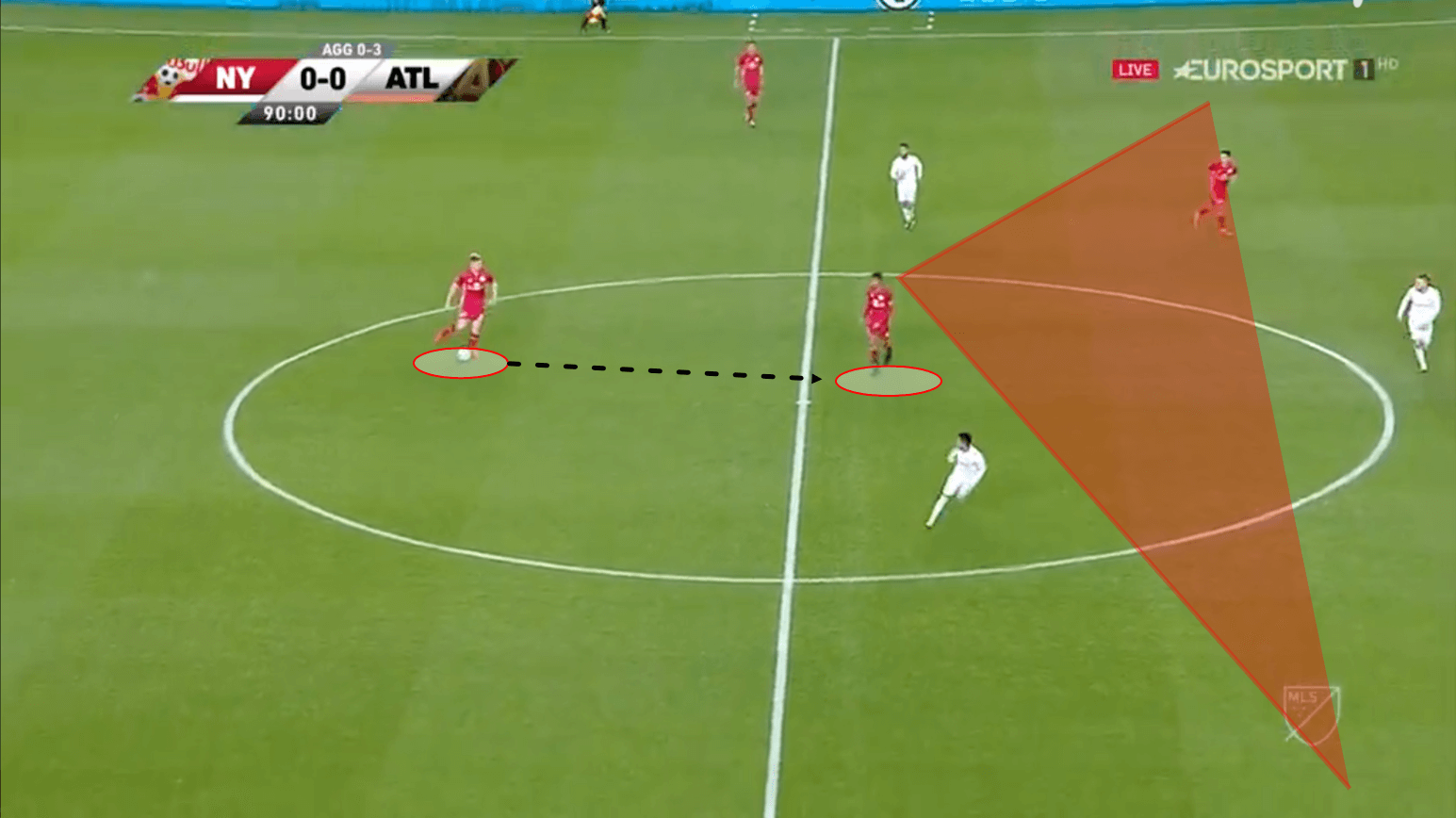
Do not assume however that Adams is restricted to this deeper role. On the contrary, the 19-year-old is the most omnipresent and energetic on the pitch. Last season, Adams led the New York Red Bulls in passes per game with 50.3, and had the second-best pass completion percentage on the team at 76.4%. He often touches the ball more than any other teammate.
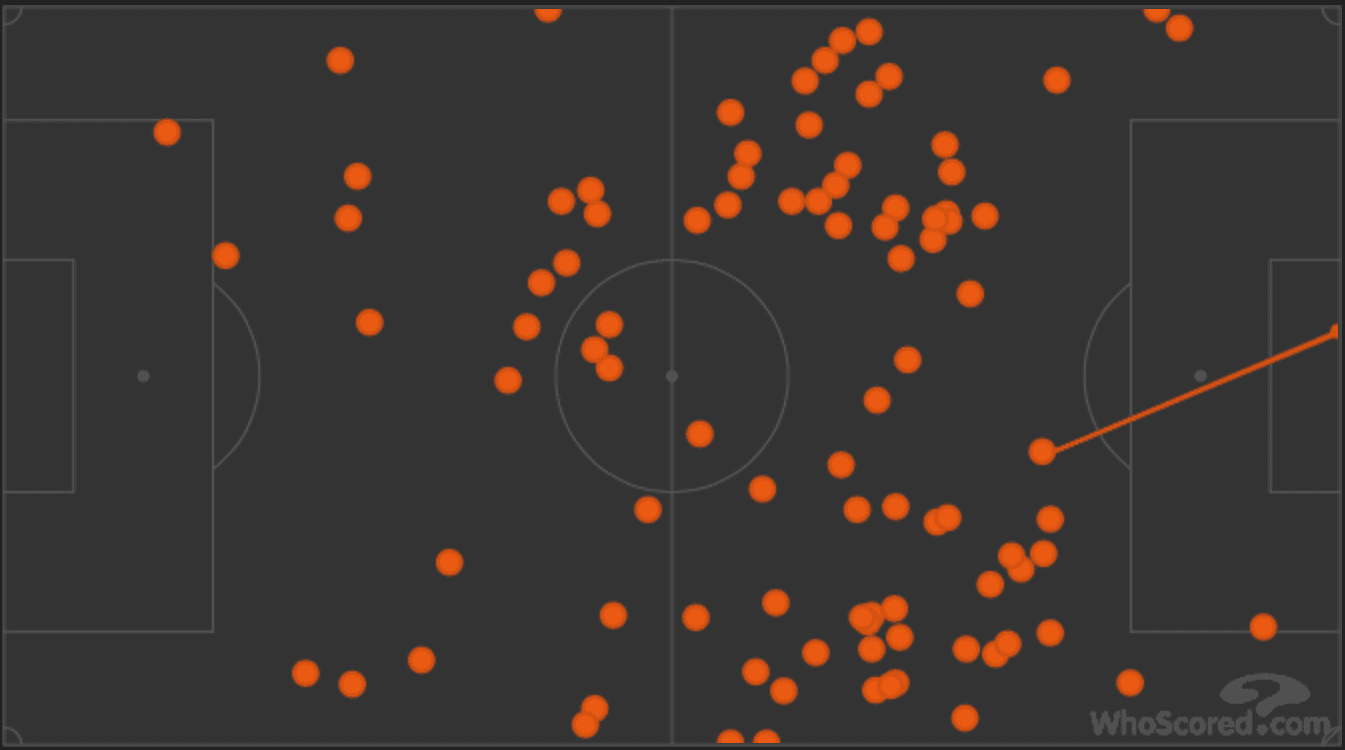
This desire to roam has been very constructive to almost all aspects of New York’s play.
Adams defending
There is a reason why Adams, despite his pervasiveness, is positioned in such a deep role: his defensive abilities are excellent. He is tremendously physical, and isn’t afraid to rush an opponent straight on. His size – 1.76 metres tall, weighing 68kg – doesn’t tell the whole story. He is deceptively strong, and consistently muscles players off the ball.
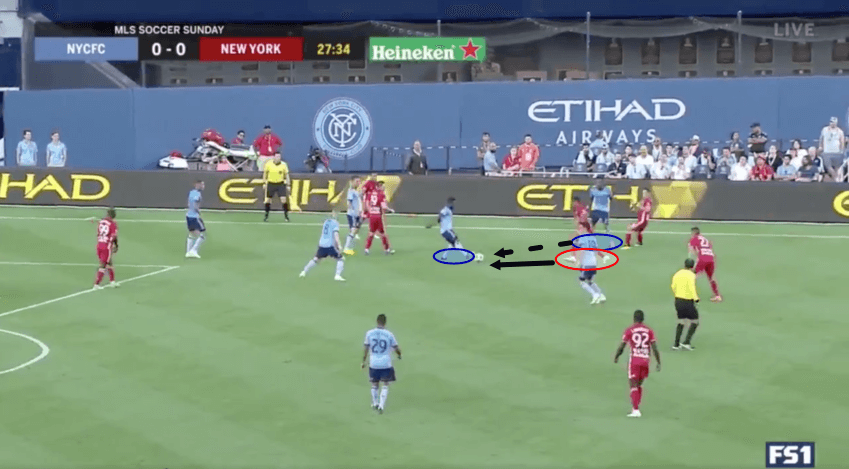
One principle of defending is reactive action. As soon as you see your opponent make a mistake on the ball, press the ball. In this scenario, Adams does just that, closing down his opponent high up the pitch and tackling the ball away. He then immediately picks his head up and makes a pass forward down the right touch line guiding the right winger.
This was an extremely high press, but this doesn’t mean Adams is ill-disciplined. The midfielder takes the rigid definitions of defending and attacking and blurs them. His strong work ethic, combined with his football intelligence, makes him an active threat in all areas of the pitch.
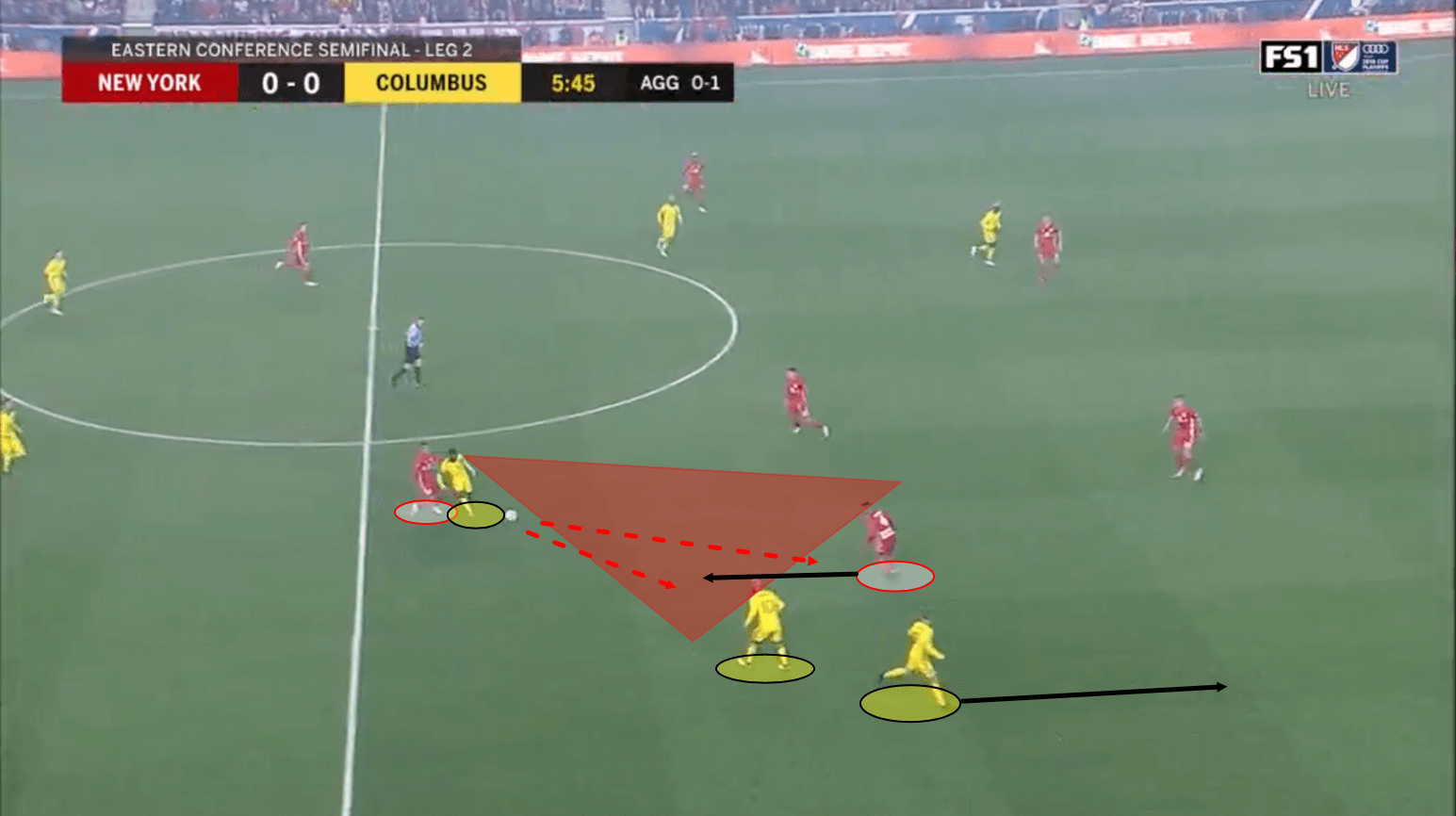
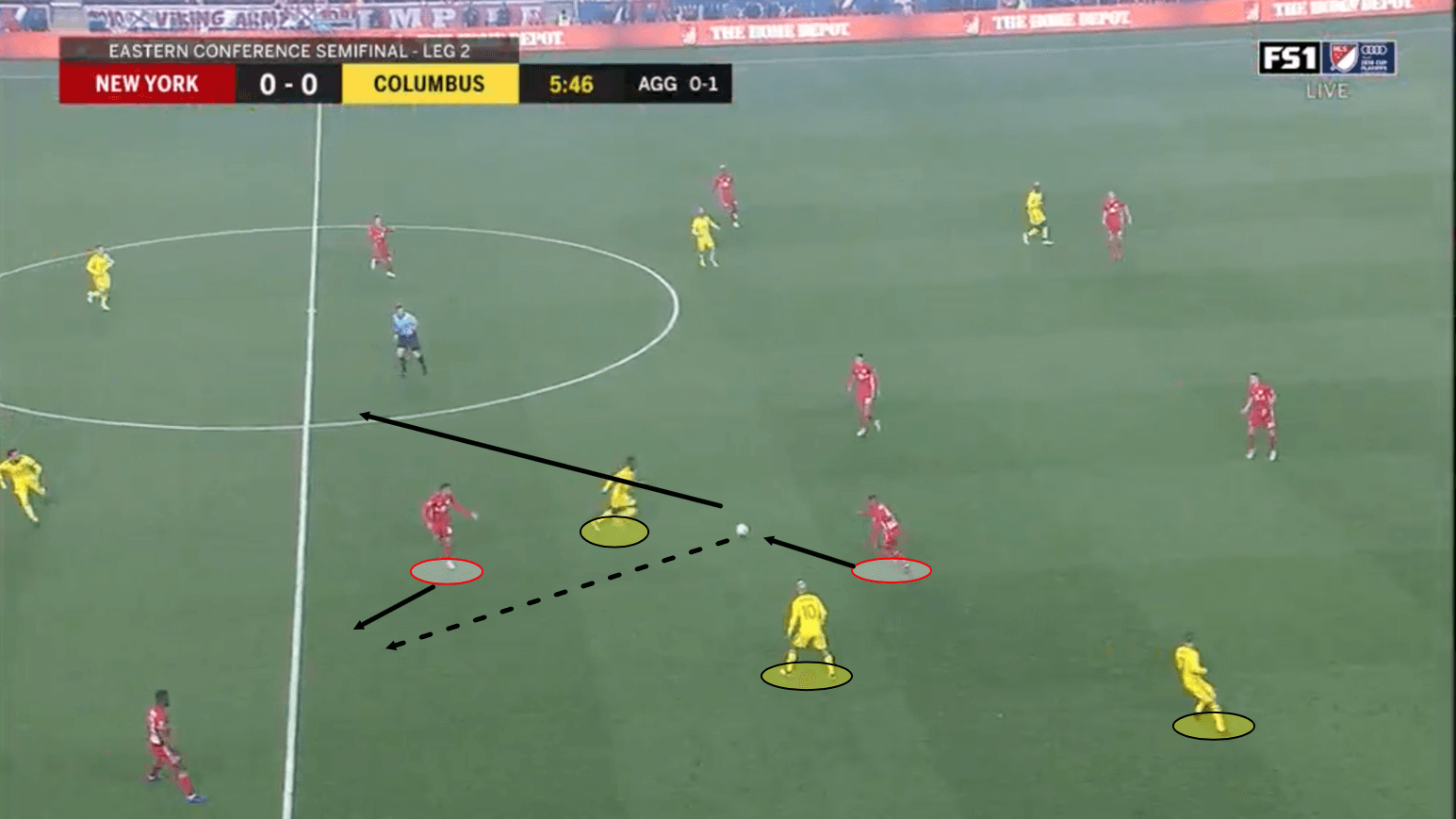
This was a very complex press to pull off, and Adams successfully administered it without much difficulty. Another example of Adams’ defensive work is in intercepting passes in the defensive third.
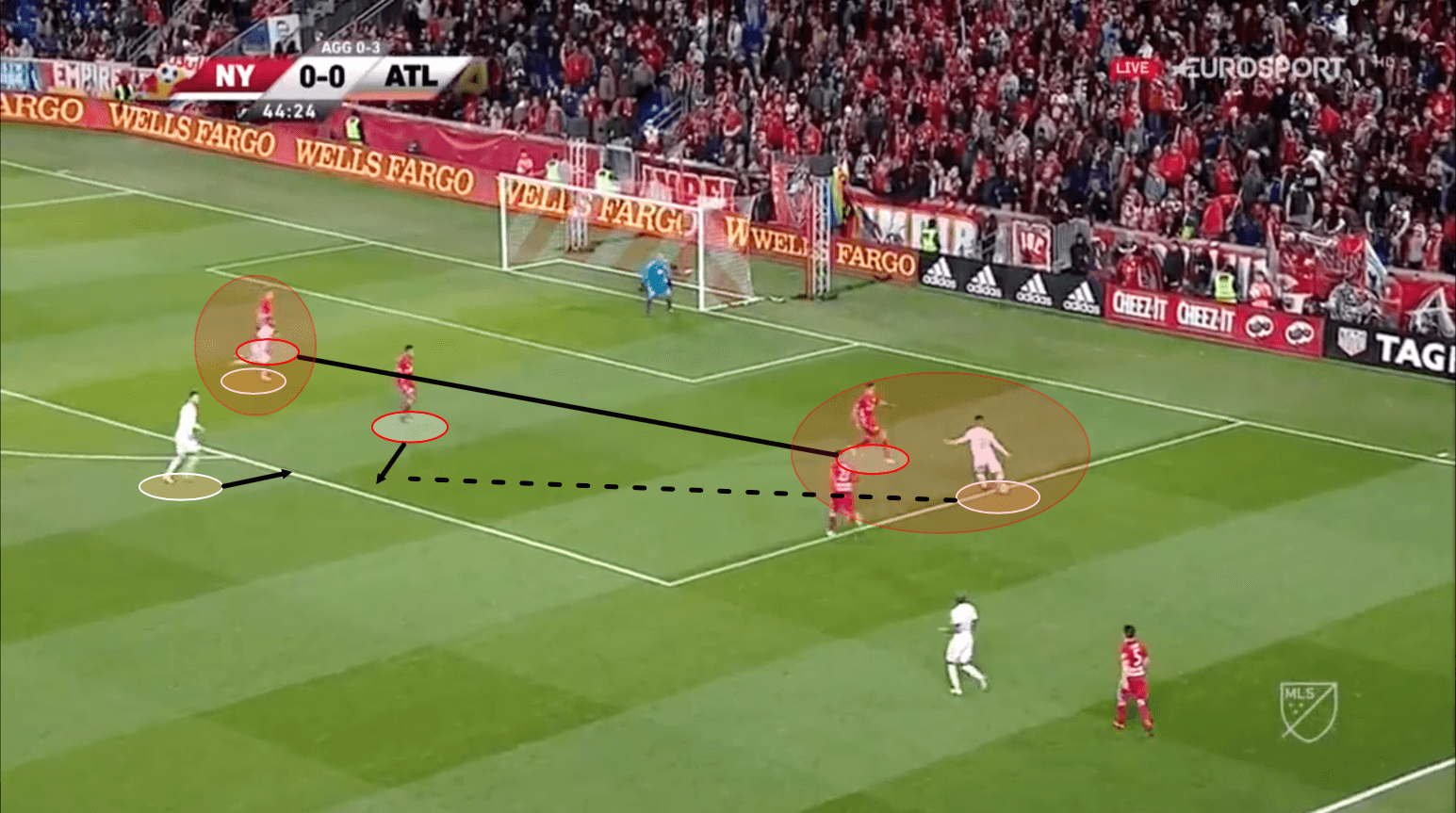
After he intercepts the ball, he either looks to pass a through-ball to an attacker or dribble forward into space, thus luring his opponent towards him creating space for his teammates.
Adams in attack
Yet as previously stated, despite being positioned as a deeper midfielder, Adams is extremely aggressive going forward, often making divebombing runs in the half-spaces.
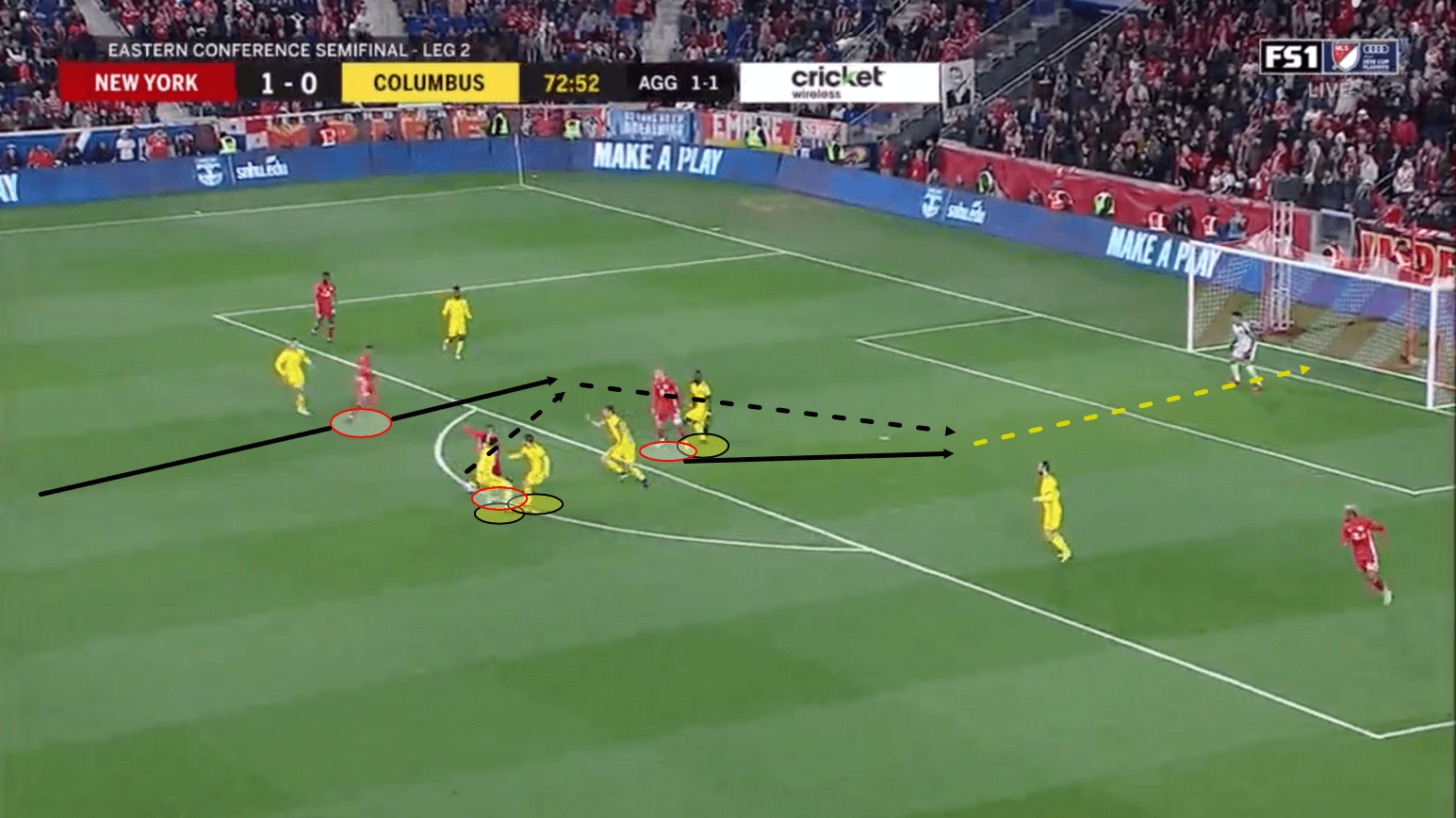
His aggression and invasive movements aren’t limited to the back half of the pitch.
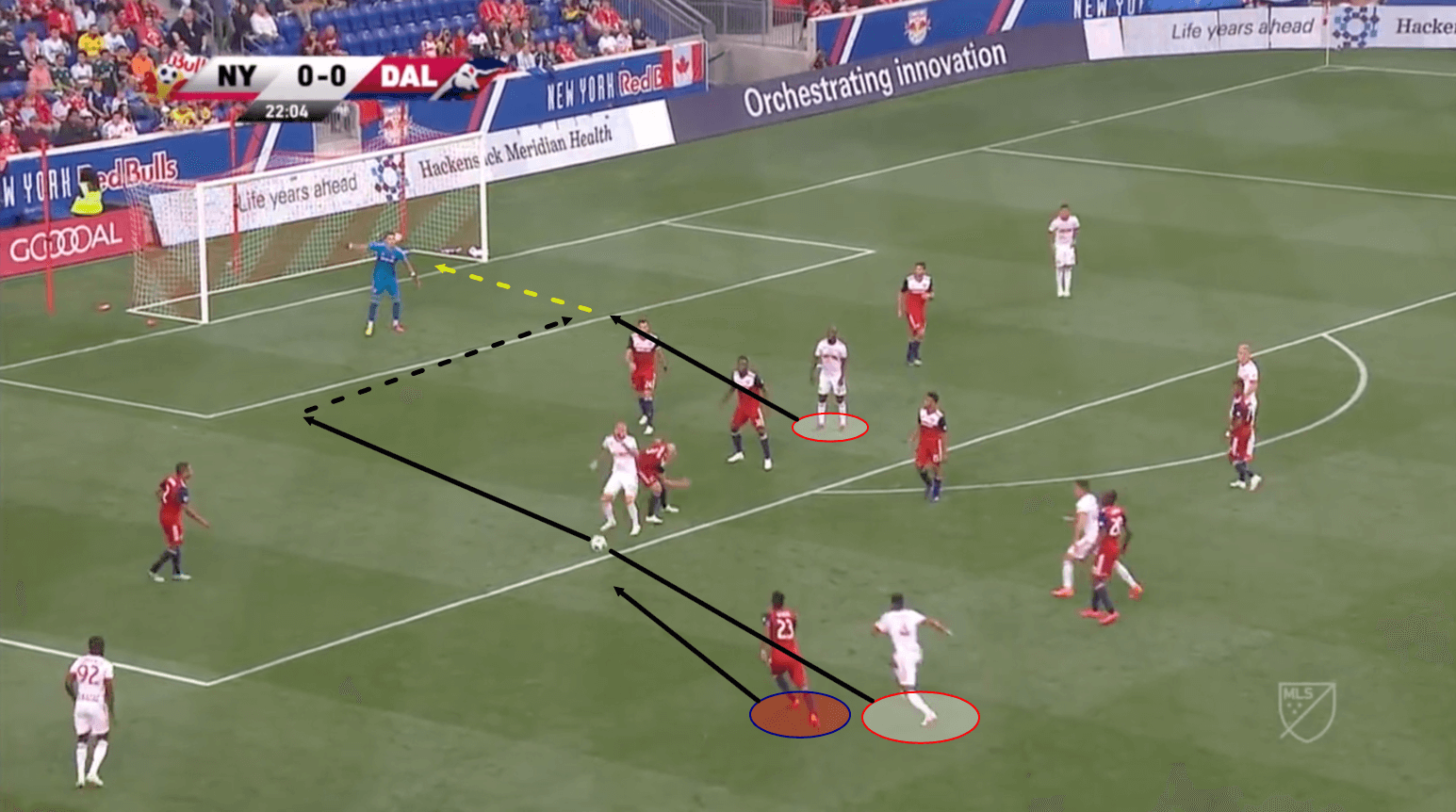
Another way Adams attacks is through forward passing. He is capable of providing accurate long balls in quick transitions, an oft-used tactic by Leipzig to progress the ball down the pitch quickly.
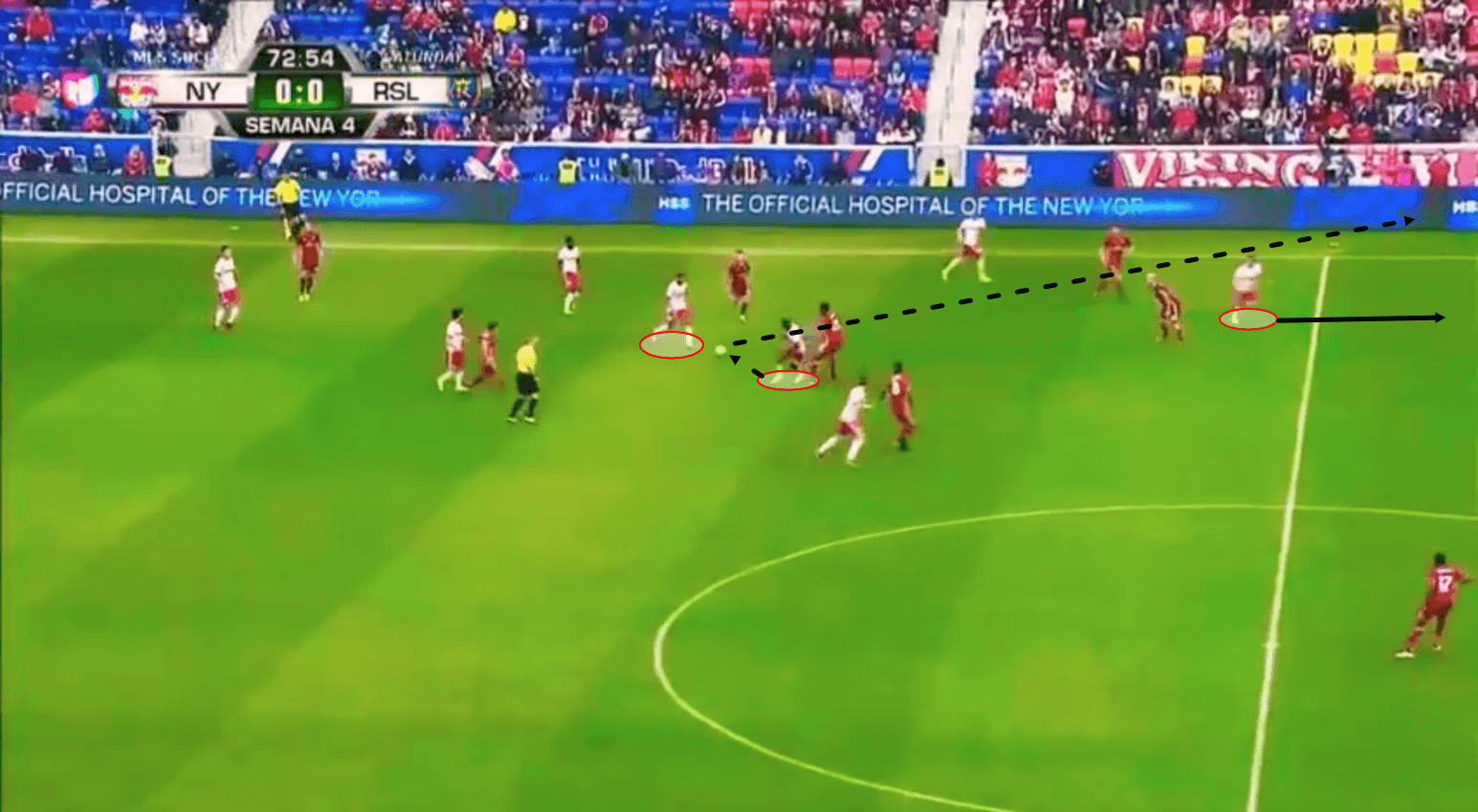
Be it a long aerial ball or a through-ball breaking lines, Adams has the capability to complete passes forward from the midfield, and his confidence in his vision and abilities shows.
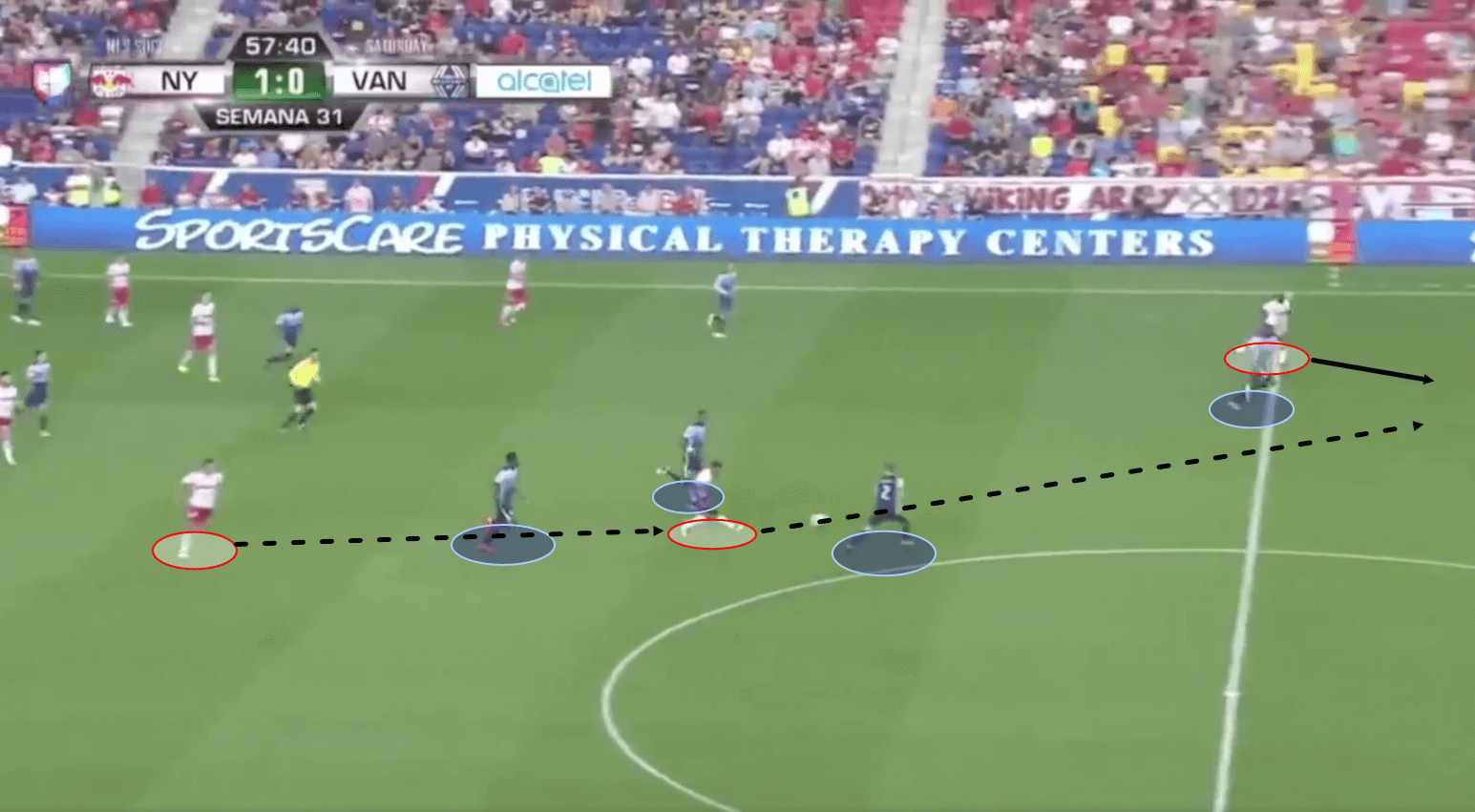
Fitting in at Leipzig
Marsch has repeatedly stated that Adams’ move to Leipzig is a perfect situation for him. The styles of play between New York and Leipzig have many similar requirements and functions. The constant presses Adams completes are a staple of Leipzig’s match plans. He has the burst of speed necessary to press aggressively and transition into a counter-attack: Leipzig’s lifeblood.
Despite the intercontinental move, Adams has plenty of support around him to succeed. Not only is Marsch a familiar face, but Adams and many of the other Americans in Germany reportedly text each other constantly, giving each other advice and motivation. Adams has also been learning German for months, something obviously beneficial when moving to Germany. Fellow newcomer Amadou Haidara is also eager to make his mark, and the two could form a budding midfield duo in the coming years.
Tyler Adams’ tactical versatility will allow him to fill a number of roles at Leipzig wherever Rangnick sees fit. The German often rotates his starting players, and with midfield an inconsistent area for Leipzig, Adams could see considerable playing time before long.
Adams on the United States National Team
Adams is unanimously considered to be one of the key football players in the future of the US national team. The team’s catastrophic failure to qualify for the 2018 World Cup was a major blow to the confidence of the sport across the country. Many youth players have departed the US since, in the hopes of developing their abilities overseas and becoming a part of the solution. Adams is one of a number of these talents that has this potential.
The new United States national team manager Gregg Berhalter wants to play a high-energy, movement-heavy style of play, something that readily favours Adams. He and McKennie are seen by most analysts as the midfielders of the team’s future; as two number eights, with one defending while the other pushes forward. Both contain a good first touch, which aids in both players’ abilities to play forward despite being classified as midfielders.
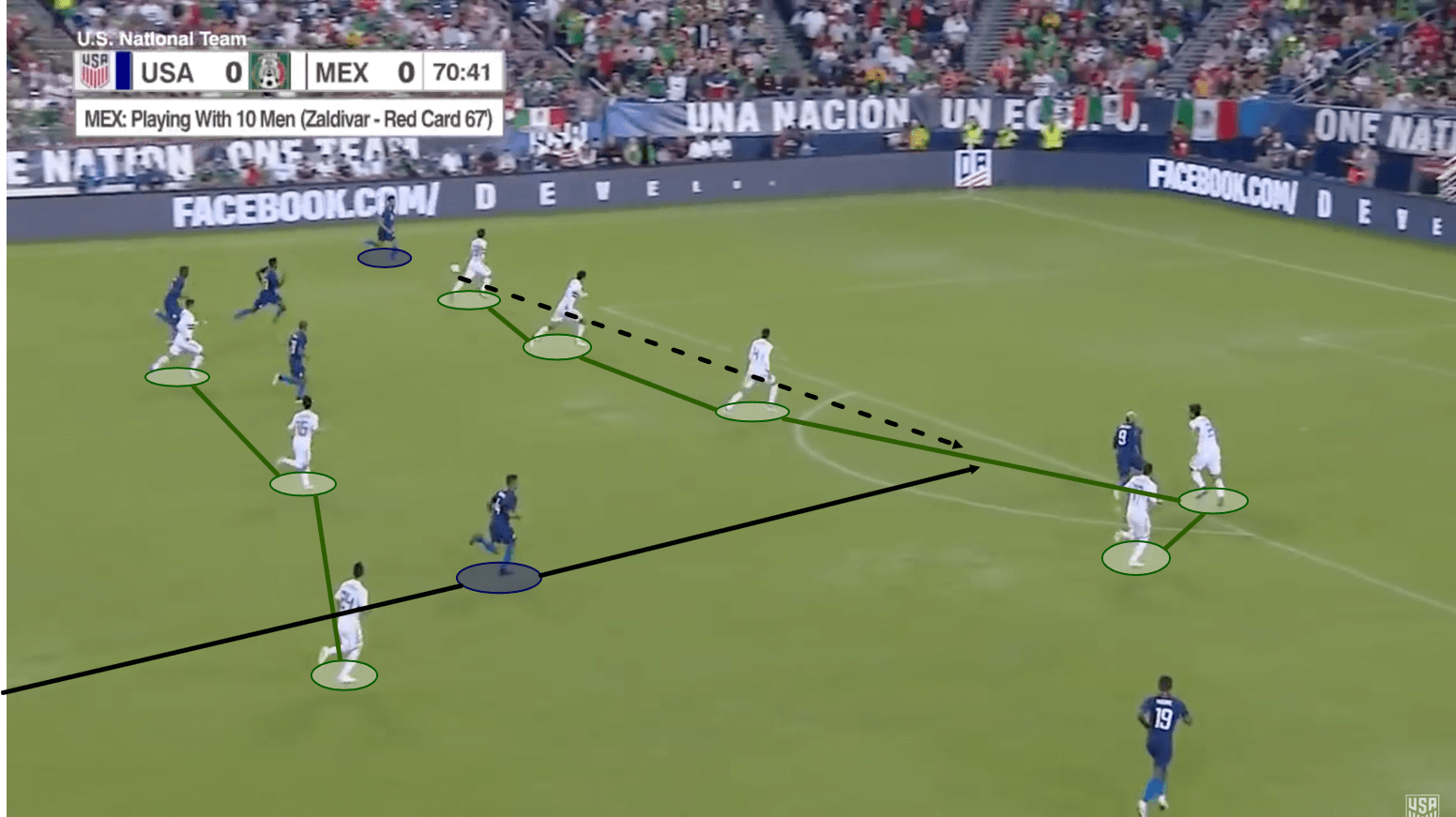
The tactical flexibility of Adams will yet again come into play. How Berhalter positions the teenager and the amount of freedom he gives him on the pitch will be essential to his success.
Adams is quickly becoming regarded as a focal point in the United States’ play. He finished second in the 2018 US Soccer Player of the Year voting, and with this move to the Bundesliga it is a distinct possibility that he will win the individual award in the future.
Conclusion
In a recent interview with Zito Madu on SBNation, Tyler Adams stated that his idol is none other than Chelsea defensive midfielder N’Golo Kante. While Adams may not match the Frenchman in level of play, he certainly matches his versatility. Adams has the vision and defensive ability of a six, but the attacking creativity and forward movements of an eight.
His aggression and physicality are bolstered by his technical ability and confidence. Despite all his positives, Adams only turns 20 on 14 February. Most coaches agree that he will need time to adjust and develop before he, as he has been unfairly called to do, fills Naby Keïta’s boots. As Tyler Adams grows as a player, however, so will his developmental ceiling, with the potential to become one of the most dynamic midfielders in Europe.
If you love tactical analysis, then you’ll love the digital magazines from totalfootballanalysis.com – a guaranteed 100+ pages of pure tactical analysis covering topics from the Premier League, Serie A, La Liga, Bundesliga and many, many more. Buy your copy of the January issue for just ₤4.99 here, or even better sign up for a ₤50 annual membership (12 monthly issues plus the annual review) right here.

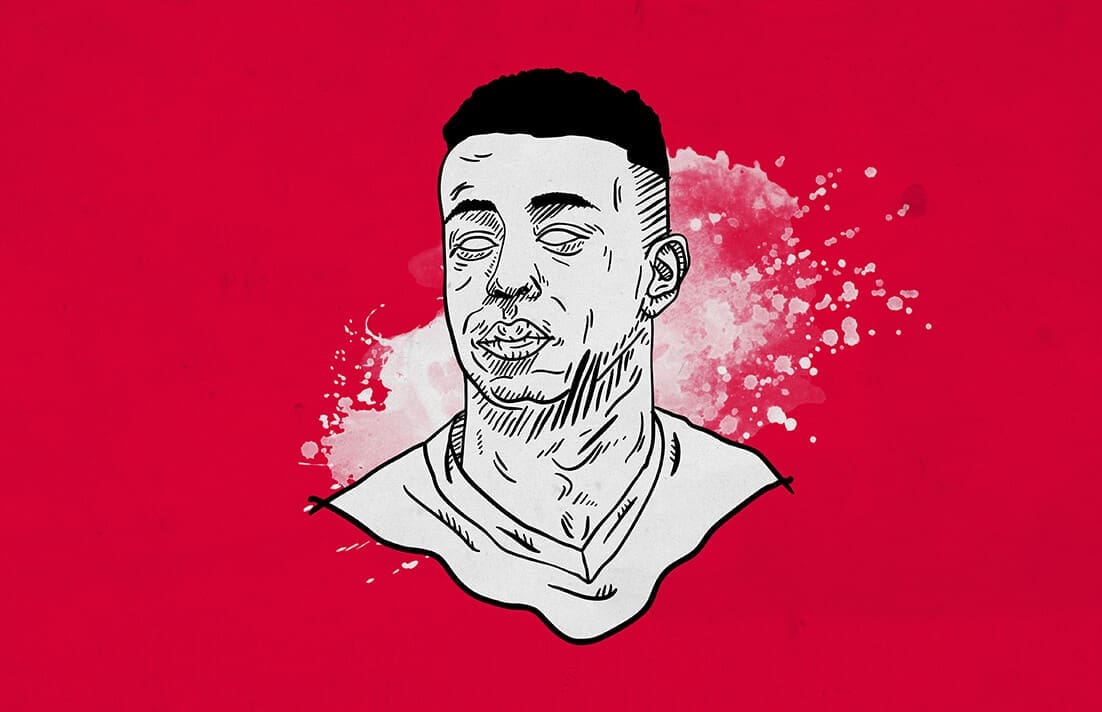


Comments